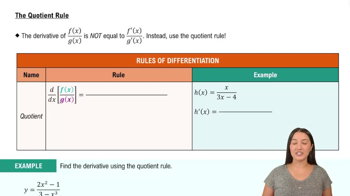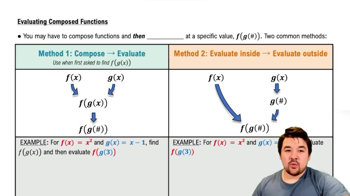Composite functions
Let ƒ(x) = x³, g (x) = sin x and h(x) = √x.
Find the domain of ƒ o g.
 Verified step by step guidance
Verified step by step guidance Verified video answer for a similar problem:
Verified video answer for a similar problem:



 5:56m
5:56mMaster Adding & Subtracting Functions with a bite sized video explanation from Patrick
Start learning